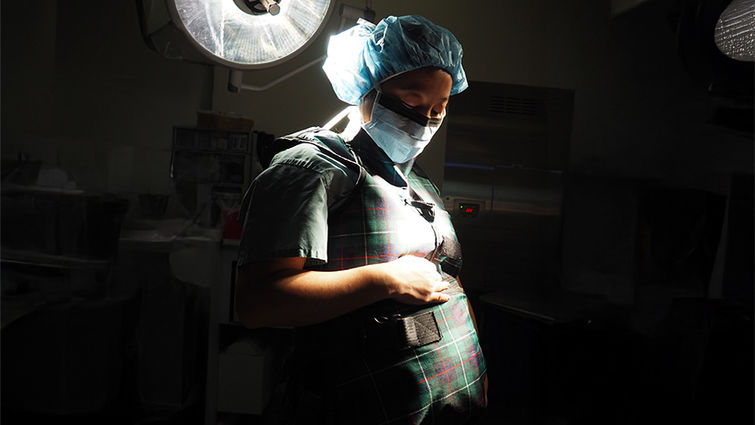

Urology resident Ruby Kuang, MD, a contributing author and pregnant surgeon, was featured on the cover of the Journal of Urology.
A new study by urologists at Loma Linda University School of Medicine has found that fluoroscopy techniques and protective protocols developed at Loma Linda University were effective in dramatically reducing radiation exposure to pregnant surgeons. These findings offer reassurance to practicing pregnant surgeons using fluoroscopy and could help establish future radiation safety protocols.
Urology has been traditionally predominated by male urologists, with only 12% of urologists and 5% of endourologists being women, according to the American Urological Association.
The study was driven by concerns regarding the low number of women choosing to specialize in endourology —a minimally invasive subspecialty of urology. “I was afraid that one of the reasons they might have been hesitant to become an endourologist was due to fears of radiation exposure,” explained Duane Baldwin, MD, professor of urology and the study’s principal investigator.
The study determined surgeon uterine radiation dose during percutaneous nephrolithotomy (PCNL) and compared effectiveness of several radiation reduction strategies in a cadaver model. Using techniques of reducing pulse frequency, using low-dose fluoroscopy, and wearing enhanced lead shielding could significantly lower radiation exposure to levels considered safe for pregnant surgeons.
The Department of Urology at Loma Linda University School of Medicine is the first to investigate the effects of different radiation reduction techniques during PCNL. According to the data, a pregnant surgeon using protective measures could perform approximately 11,000 PCNLs before reaching the 1-mSv annual radiation exposure limit — compared to only 12 PCNLs without any protection.
The research process yielded some surprising findings, particularly regarding the effectiveness of radiation protection strategies. “I was surprised how high the radiation dose was without radiation protection, and I was even more surprised at how low we could get the dose if we used aggressive radiation protection strategies,” Baldwin noted.
There is an upward trend of women entering the field, according to residency match data. In the 2025 urology match, 42% of matched applicants were female. This study’s findings support that women should not have to compromise their surgical training in residency and/or fellowship due to fears of radiation exposure if they choose to conceive.
The study featured contributions from Loma Linda University School of Medicine urology residents, attending physicians, and medical students. Sikai Song, MD, urology resident, served as the first author, while fellow urology resident Ruby Kuang, MD, a contributing author and pregnant surgeon, was featured on the cover of the Journal of Urology.
Dr. Herbert Ruckle, Chair of the Urology department, has fostered an environment supportive of research which has allowed the department to make these groundbreaking discoveries.


